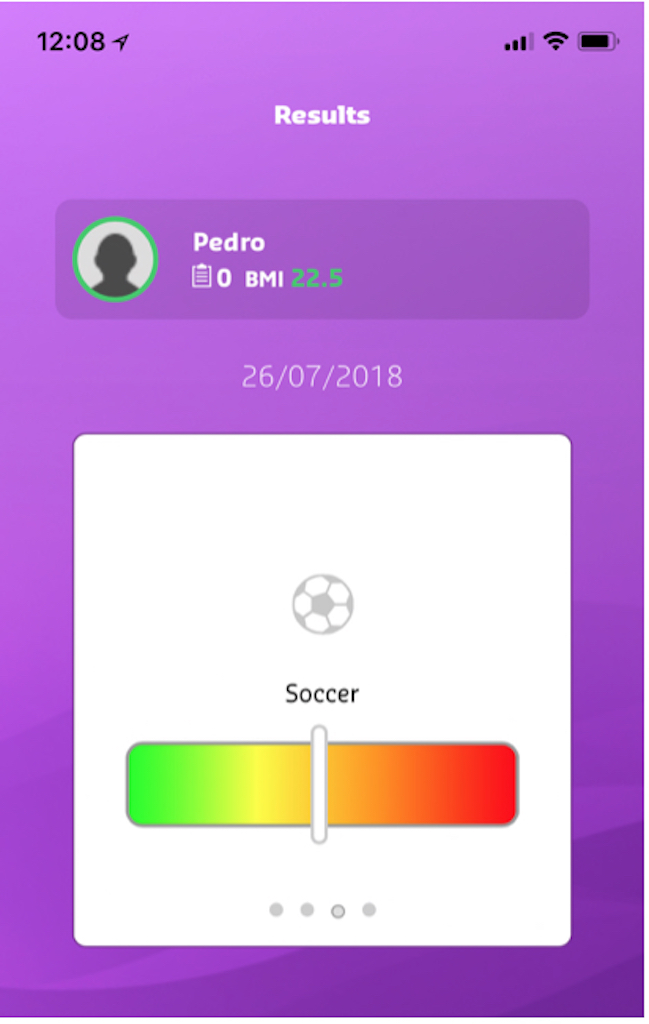By Natalia Bittencourt @bittencourt_nfn, Sergio Fonseca and Luciana D Mendonça @luludemichelis
APP REVIEW
NAME OF THE MOBILE APPLICATION
PHAST – Physiotherapy Assessment Tool
CATEGORY OF THE MOBILE APPLICATION
Android: health and wellness; iOS: health and fitness.
PLATFORM
Android, iOS.
COST
3 Free Assessment credits; 10 Assessment credits US$23.99
ABOUT THE APP
Several sports injuries are a result of musculoskeletal (MSK) factors1. The PHAST app presents this relationship between MSK factors and sports injuries, and applies it to physical therapy. The app optimises the assessment process for a physiotherapist by indicating the most important tests required based on an athlete’s specific sports demands. It also suggests a list of standardised tests such as mobility, stability and muscle function. For example, when assessing a volleyball player, PHAST suggests ankle dorsiflexion ROM, foot alignment, hip muscle function and others, which contribute to an athlete’s clinical profile and their relationship to possible injury occurrence2. The app reinforces the functionality paradigm in physical therapy and indicates evidence-based tests, which have, in most part, their psychometric proprieties documented2. This is important as only 22% of sports injury prevention mobile apps are evidence-based3.
PHAST directs the clinician’s attention to movement and function. To completely understand the movement, the physical therapist must consider the kinetic chain and perform global assessments. The musculoskeletal system must be capable to generate, dissipate and transfer mechanical energy within the elements of the kinetic chain2,4. In addition to this, the mechanical energy applied to the musculoskeletal system must also be considered. The main objective of PHAST is to analyse the balance between the athlete’s capability and their chosen sport demands2,4, and to provide a thorough view (profile) of the athlete’s potential to perform.
USE IN CLINICAL PRACTICE
PHAST can be used by physical therapists during assessments and re-assessments to improve decisions regarding interventions. For each test, PHAST indicates its respective cut-off points. Therefore, if an athlete scores below a given value, the app will highlight the test result in red to warn the physiotherapist (Figure 1).
The app gives the option to visually indicate the athlete’s injury profile (match between athlete’s capability and sport’s demand2,4) using a thermometer (Figure 2). Green bars indicate low probability of injury (proper profile) and the red bars indicate higher probability of injury (improper profile). The algorithm implemented considers existing evidence and clinical reasoning to establish the contributing weight for each factor and the interactions among them (e.g. MSK tests, workload data and previous injuries). Finally, PHAST provides a report indicating an athlete’s clinical profile and which areas require attention to ensure fitting prevention or rehabilitation interventions.
PROS
- Evidence-based
- Customisable assessment profiles
- Allows the recording of workload and previous injuries
- Provides demonstration videos for the tests
- Final reports include scientific cut-off parameters for all standardized tests
CONS
- Video capturing and analysis not available
- Not yet validated

Figure 1: PHAST report and cut-off point for each test
Figure2: PHAST thermometer for each athlete assessed
***
Natalia Bittencourt and Luciana Mendonça created the app.
Sergio Fonseca is the scientific consultant for the app.
Natalia Bittencourt owns the PHAST application.
Natalia Franco N. Bittencourt (@bittencourt_nfn) is a Sports Physical Therapist in Belo Horizonte, Brazil. Ph.D. in Rehabilitation Science. She is the Head of Sports PT Department of Minas Tenis Club (8 Olympic sports and 1000 athletes) and professor at UNI-BH. She is on SONAFE’s Executive Board (Brazilian National Society of Sports Physical Therapy). Email: nataliabittencourt@yahoo.com.br
Sérgio T. Fonseca is a Full Professor at the Department of Physical Therapy of the Universidade Federal de Minas Gerais (UFMG) in Brazil. He received a B.Sc in Physical Therapy from UFMG, M.Sc in Physical Therapy from University of Alberta, Canada, and Sc.D in Applied Kinesiology from Boston University, USA. Currently, Sergio is the Editor of the Brazilian Journal of Physical Therapy. He has been involved in research activities focusing on applying dynamic systems and ecological approaches to the understanding of human movement and sports injuries occurrence and prevention. email: sergioteixeirafonseca@gmail.com
Luciana De Michelis Mendonça (@luludemichelis) is a sports physical therapist in Brazil. Ph.D. in Rehabilitation Science. She is a professor at UFVJM in Diamantina and a member of the executive board of the IFSPT. She was president of the Brazilian National Society of Sports Physical Therapy (SONAFE). You can follow her on twitter @luludemichelis. Email: lucianademichelis@gmail.com
References
- Myer GD1, Ford KR2, Di Stasi SL3, Foss KD4, Micheli LJ5, Hewett TE6. High knee abduction moments are common risk factors for patellofemoral pain (PFP) and anterior cruciate ligament (ACL) injury in girls: is PFP itself a predictor for subsequent ACL injury? Br J Sports Med2015 Jan;49(2):118-22.
- Mendonça LD, Ocarino JM, Bittencourt NFN, Macedo LG, Fonseca ST. Association of Hip and Foot Factors With Patellar Tendinopathy (Jumper’s Knee) in Athletes. J Orthop Sports Phys Ther2018 May 23:1-29.
- Mechelen DM, Mechelen W, Verhagen EALM. Sports injury prevention in your pocket? Prevention apps assessed against the available scientific evidence: a review. Br J Sports Med2013;0:1–5.
- Nielsen RO, Bertelsen ML, Møller M, Hulme A, Windt J, Verhagen E, Mansournia MA, Casals M, Parner ET. Training load and structure-specific load: applications for sport injury causality and data analyses. Br J Sports Med2017 Jul 24.
